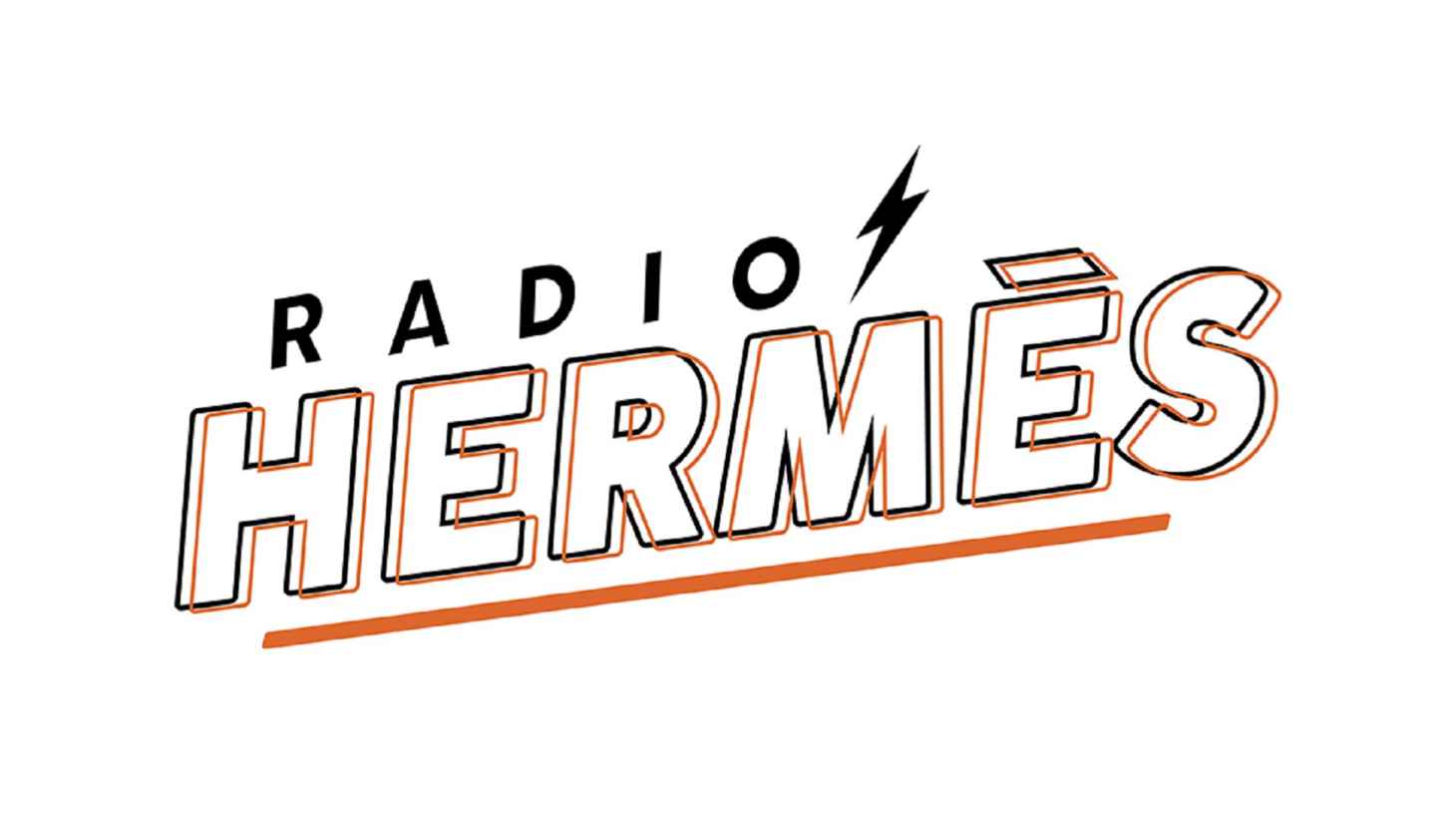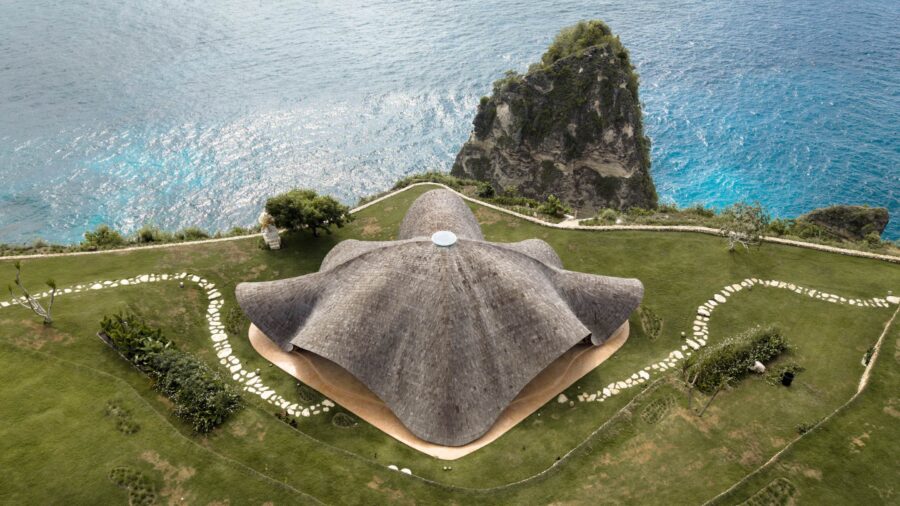![[大阪・関西万博]海外パビリオン紹介_イタリア・バチカン](https://magazine-asset.tecture.jp/wpcms/wp-content/uploads/2025/05/30163539/351fb3a85600fff096977e1afef70463-900x570.jpg)
CULTURE


© Aaron Leitz
ワシントン州の森の中に位置する〈マクソン・スタジオ(Maxon Studio)〉は、住宅の一部として設計された仕事場であり、レールの上を移動することで生活空間と接続したり、分離して森の中の独立した空間にもなる鉄骨2階建てのスタジオです。作業に没頭できる下層階と風景を見渡す上層階が、クリエイティビティを刺激する空間となっています。
実際の鉄道で使われていた枕木や制御盤を活用し、日本の新幹線を参考にした機構を組み込むことで耐震性も確保しています。アメリカの設計事務所 オルソン・クンディグ(Olson Kundig)が設計しました。
(以下、Olson Kundigから提供されたプレスキットのテキストの抄訳)

© Aaron Leitz

© Aaron Leitz
レールの上を走り、住宅と接続したり、森の中へと移動できる仕事場
2008年、ルー&キム・マクソン夫妻は自分たちの生活を再定義したいという思いから、郊外という枠にとらわれない新居〈マクソン・ハウス(Maxon House)〉の設計を、オルソン・クンディグの建築家 トム・クンディグ(Tom Kundig)に依頼した。
〈マクソン・ハウス〉は、無駄なスペースを最小限に抑え、機能性と柔軟性を優先した効率的な住宅であり、寝室は共有スペースに家族が集まることを促すため、意図的に小さく保たれている。

© Aaron Leitz
ルーのオフィスは一時的に家の中に置かれたが、設計のビジョンには常に、メインのリビングエリアから離れた、独立したスタジオ兼ワークスペースが含まれていた。
建築家 トム・クンディグは次のように語る。
「私たちは、母屋を出て通勤することも体験の一部であることの重要性について話し合った。『ルーのオフィスをレールに乗せて、森の中に連れ出すことができたらどんなにクールだろう?』という、軽い気持ちで言った言葉を、どうしたら実現できるか皆で知恵を出し合ったのである。」

© Aaron Leitz
移動することで生活スペースと接続・分離できるスタジオ
地元地域の鉄道産業の遺産や、母屋建設の掘削中に発見されたスチールケーブルや鉄道スパイクに触発され、〈マクソン・スタジオ〉は線路上に設置された。
このユニークなインフラ・ストラクチャによって、居住スペースの延長ではなく、独立したスタジオへと移行することができるのである。

© Aaron Leitz
トム・クンディグとプロジェクト・マネージャーである建築家 エドワード・ラロンド(Edward Lalonde)は、施主であるルーと協力してスタジオの設計コンセプトを練り、ルーはプロジェクトにおけるゼネコンとしての役割を担っていた。
彼は溶接業者 Alpine Weldingと密接に協力し鉄骨加工を行い、線路やバラストなど、スタジオの他の要素も調達した。
家を建てるというのは人生において大きなプロジェクトであり、そこに動く要素が加わるとなればなおさらである。コンセプトから竣工まで、このプロジェクトの実現には本当に特別なクライアントが必要なのであった。

© Aaron Leitz
クリエイティビティを刺激する、作業に没頭できる下層階と風景を見渡す上層階
2階建ての鉄の塔は、母屋の素材感と眺望を反映しつつ、母屋の水平的なプロポーションを垂直方向に変換している。
スタジオの下層階はメインの作業スペースとなっており、造り付けのデスクや収納・ディスプレイ用の多数の棚が設置されている。スチール張りの壁により、ワークスペースは視覚的に刺激的な素材に囲まれており、クリエイティブなテーマや課題の変更に応じて簡単に入れ替えることができる。

© Aaron Leitz

© Aaron Leitz
上層階へはスチール製のはしごで上がることができ、重いものやかさばるものを運ぶための小さなダムウェーターも設置されている。
クリエイティブな探求と回復のための落ち着きのある場所として構想されたこのフロアは、列車の運転台のキューポラのように機能し、風景を見渡せる高い見晴らしの良い場所となっている。

© Aaron Leitz

© Aaron Leitz
スタジオのあちこちには、列車や鉄道デザインがプロジェクトに与えた影響を示唆するものがある。
施主であるルー・マクソンは次のように語る。
「私のクリエイティブ・ブランディングの仕事における最初のインスピレーションは、常に深い洞察から生まれる。だから、鉄道の世界に没頭したのである。鉄道模型を集めたり、鉄道のグラフィックデザインを研究したり、鉄道を中心とした休暇を取ったりもした。その中で私は常に学び、その新しい知識をプロジェクトに応用していった。」

© Aaron Leitz

© Aaron Leitz
スタジオの制御盤は、かつてバーリントン・ノーザン鉄道の機関車に設置されていたものであり、電気的な加速と制動を管理するために配線を変更し、適合させた。
スタジオのドアの色は、グレート・ノーザン鉄道の列車に使われていたオリジナルのデュポン社の塗装色と同じである。使用されている木製の枕木は、グレート・ノーザン鉄道の中継線からリユースした本格的なものだが、鋼鉄製の線路は一般的に使用されているものよりもはるかに大きなレールの間隔となっている。また、線路には地震の際にスタジオが傾くのを防ぐため、日本の新幹線を参考にスタビライジング・バーも設置されている。

© Aaron Leitz

© Aaron Leitz

© Aaron Leitz

© Aaron Leitz

© Aaron Leitz

© Aaron Leitz
以下、Olson Kundigのリリース(英文)です。
MAXON HOUSE & STUDIO
Carnation, WashingtonA desire to redefine their family life led Lou and Kim Maxon to think outside the suburban box and approach architect Tom Kundig for the design of their new home in 2008. “We were expecting our third child,” Lou recalls. “So at first we were honestly just looking for a bigger house. When we realized we would have to leave our current school district, we thought, Let’s make this a big move. Kim found the property in Carnation and we both felt like, this is it. There’s something here.”
When Tom and project manager/project architect Edward Lalonde visited the heavily forested site, they were drawn to a steep slope overlooking the Tolt River Valley below. “I remember Tom walking right up to the edge and saying, ‘This is it.’ We were coming from a house that was on a corner lot, where there’s a distinguished front and backyard and side yard. Here we had to reorient ourselves, where the front yard is the valley view and the backyard is the entrance.”
The slope inspired the home’s cantilevered design and rectangular plan that maximizes views of the valley. A wall of full-height windows in the main living area frame the surrounding fir trees while countering the overall horizontality of the floorplan. Raw, honest materials inside reflect the simple program and turn the emphasis to family connections.
In addition to designing their home, the Maxons stepped into the role of stewards for the site, working closely with a forester and establishing a plan to preserve as much of the natural landscape as possible during and after construction. “As clients, Lou and Kim had great instincts,” Tom shares. “They recognized the importance of leaving healthy trees in the foreground to filter the view, both from down the valley and from the top.” The result is a home that sits quietly in the landscape, all but hidden from view.
Edward adds, “When you’re in the space, you’re lifted just slightly above the ground and you feel like you’re in the trees. There’s a relationship between the vertical proportions of the windows and the trees just beyond that makes the home feel like it was truly meant to be in this space. It’s very comfortable, like a tree fort nestled in the forest.”
Maxon House is an efficient home, minimizing wasted space and prioritizing functionality and flexibility. The home’s bedrooms were deliberately kept small to encourage gathering as a family in common spaces. Though Lou’s office was located in the home temporarily, the design vision was always to include a separate studio and workspace away from the main living areas.
“We talked about the importance of leaving the main house and having a commute as part of the experience,” Tom remembers. “I said, somewhat jokingly, ‘Could we deploy Lou out into the forest? How cool would it be to take his office and put it on tracks?’ It started as an offhand comment, but we quickly realized we all wanted to figure out how to make it happen.”
Inspired by the legacy of the rail industry in the local region, as well as steel cables and railroad spikes discovered on the site during excavation for the main house, the studio is mounted on a 15-foot-gauge railroad track. This unique infrastructure allows it to transition from a nested extension of the home’s living space to an independent, detached studio.
Tom and Edward worked with Lou to develop a design concept for the studio, with Lou stepping into the role of general contractor for the project. He worked closely with Alpine Welding on steel fabrication and sourced other elements of the studio, including the railroad tracks and ballast. “During design and construction of the main house, we often described Lou as relentless,” Tom shares. “Building a home is a big project and it requires dedicated follow-through to make it happen. Then you add elements that move and there’s another layer of complexity. It takes a really special client to take the idea through from concept to completion.”
The two-story steel tower reflects the materiality and views of the original home, while translating the home’s horizontal proportions to a vertical arrangement. Like a traditional caboose, the studio’s lower level is the main working space, with a built-in desk and numerous shelves for storage and display. A steel-clad wall allows the workspace to be surrounded by visually inspiring materials that can be easily replaced as creative themes and assignments change. The upper level is accessible via a steel ladder, with a small dumbwaiter to transport heavy or bulky items. Envisioned as a calmer zone for creative exploration and restoration, this level functions much like a cupola on a train’s caboose, a high vantage point to look out across the landscape.
“I really appreciate the level of care that Lou brought to the studio,” Edward says. “As architects, we’re always visualizing what the building will look like, its materiality and proportions, but experiencing the finishing touches and personal details that he added are so impressive. For someone to take this on as their first management project and bring this level of creativity and rigor to the process is pretty spectacular.”
Subtle references and industry artifacts throughout the studio reference the influence of trains and railway design on the project. “The first instinct for me in my creative branding work is always deep recon,” Lou says. “So I really immersed myself in the world of trains, which led me to start collecting model trains and researching graphic design on trains and taking vacations centered around trains. I was always learning and then applying that new knowledge to the project.”
The studio’s control panel, which was formerly installed in a Burlington Northern locomotive, has been rewired and adapted to manage electrical acceleration and braking. The color of the studio door matches the original DuPont paint color of the striping on Great Northern trains, while plywood was chosen as interior wall cladding due to its widespread use in railcars. The wooden railroad ties used are authentic to the industry, repurposed from a Great Northern Railroad relay line, though the steel tracks are a much larger gauge than is typically used. Informed by Japanese high-speed railways, the studio track also includes a stabilizing bar that will prevent the tower from tipping during an earthquake.
“Seeing the studio for the first time after construction, I was blown away,” Tom shares. “It’s a beautiful object, beautifully fabricated, but moving it along the track is another experience entirely. What Lou and Alpine were able to achieve with reconfiguring the electronics of the control panel and elegantly allowing the electrical connection to unspool behind the studio is absolute brilliance. It’s a prime example of taking an idea 60% or 70% of the way, and then stepping aside to let an expert bring it fully to life.”
PROJECT CREDITS
Completed: 2022
Size: 300 SF
Project Team: Tom Kundig, FAIA, RIBA, Design Principal; Edward Lalonde, Principal; Phil Turner, Gizmologist
Client and General Contractor: Lou Maxon
Key Consultants: Alpine Welding, Steel Fabrication; MCE Structural Consultants, Structural Engineer
「Maxon Studio」Olson Kundig 公式サイト
https://olsonkundig.com/projects/maxon-studio/









